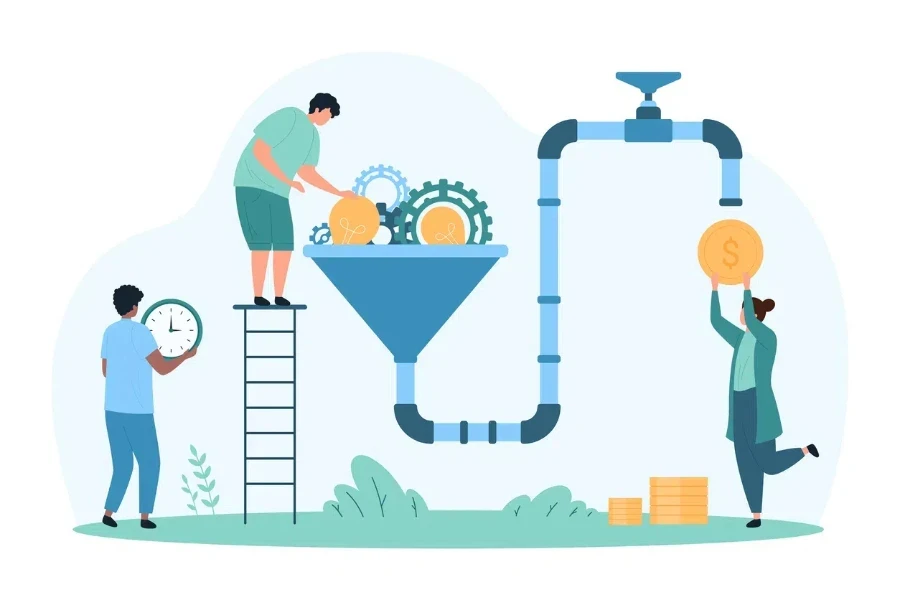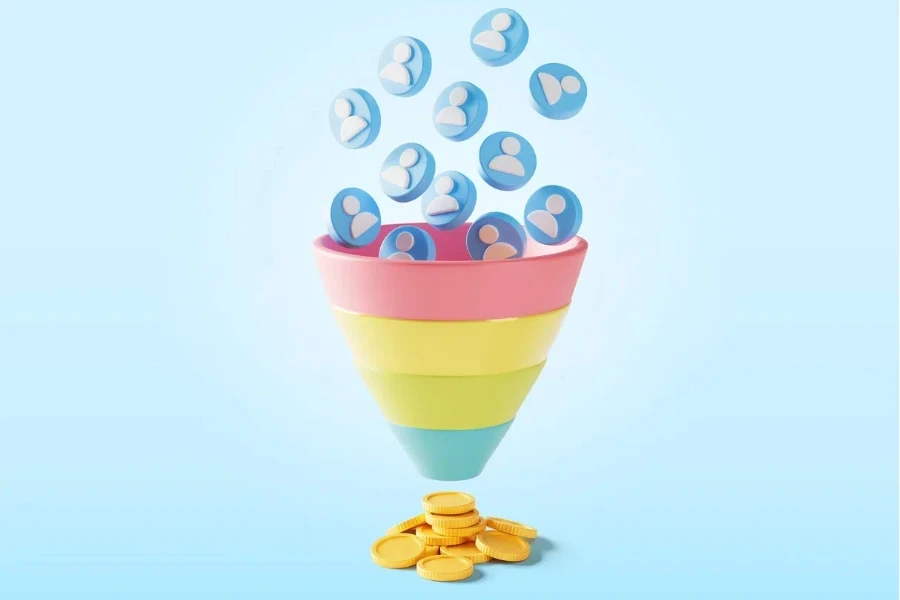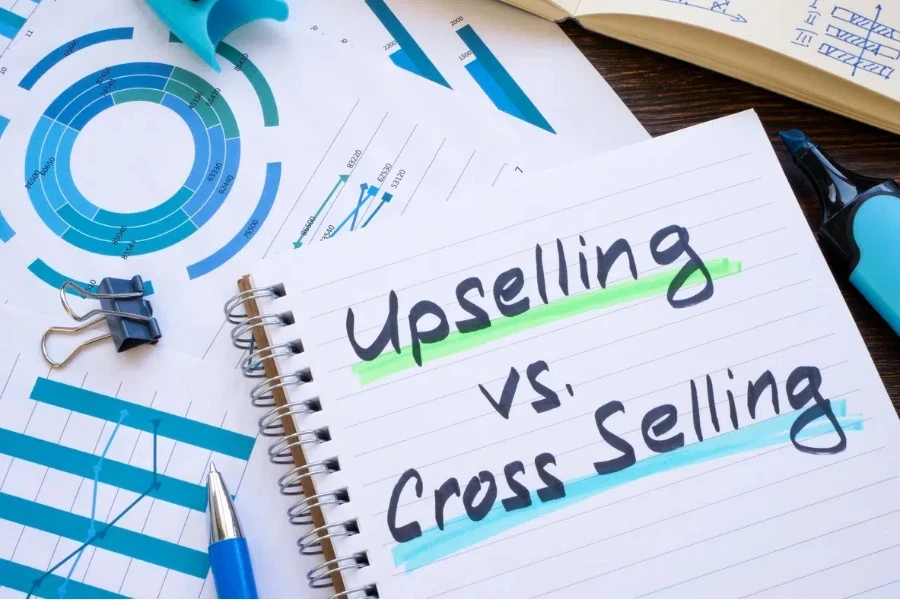In today’s fast-paced digital marketing world, where competition is tough and people’s attention is fleeting, businesses need smart approaches to turn online traffic into loyal customers. A big part of this process is down to utilizing efficient click funnels via your various online channels.
Click funnels offer a step-by-step process to guide potential customers through their purchasing journey, not only meeting their individual needs but also building trust and boosting conversion rates. This can help brands grow their businesses effectively.
Here, we’ll explore click funnels, how they differ from sales funnels, and how businesses can craft ones that convert.
Table of Contents
What are click funnels?
How do click funnels differ to sales funnels?
How does a click funnel work?
An excellent example of a click funnel
5 steps to help businesses create an effective click funnel
Summary
What are click funnels?

A click funnel is a series of web pages (specifically landing pages) designed to guide potential customers toward a specific action, like making a purchase or signing up for a newsletter. Simply put, they’re a step-by-step process that moves consumers from initial interest to a final goal.
Usually, people enter click funnels through email links, social media posts, or ads. These links direct them to a focused landing page with content and CTAs that encourage them to take the next step, making it easier to turn interest into action and boost conversions.
How do click funnels differ to sales funnels?

While sales and click funnels are both designed to turn prospects into customers, they work in different ways. A sales funnel covers the entire customer journey, from when they first learn about the business to making a purchase using online and offline methods like phone calls, meetings, or print ads.
On the other hand, click funnels are entirely online. They guide people through a series of web pages with the goal of turning them into a customer or getting them to sign up for content, etc. Each page features a distinct path that moves the user toward taking a desired action.
Click funnels vs. sales funnels: The customer conversion process
Sales funnels involve multiple steps, like generating and nurturing leads across various interactions and channels. Businesses can use CRM systems and marketing automation tools to improve their sales funnels and help manage the customer journey.
Conversely, click funnels are a set of web pages with clear CTAs, making the process more straightforward and trackable. Businesses often use specialized software to build and optimize these funnels, monitor user activity, and adjust things in real time.
Click funnels vs. sales funnels: Measuring success
The way businesses measure effectiveness for sales or click funnels also differs. For instance, a sales funnel’s success is based on metrics like lead quality, sales cycle length, and conversion rates. Click funnels, meanwhile, are measured via click-through rates, page conversions, and overall funnel performance.
In short, a sales funnel gives a big-picture view of how businesses attract and convert customers throughout the entire sales process, while click funnels focus specifically on the online journey, helping to drive digital conversions more effectively.
How does a click funnel work?

The click funnel conversion process starts when visitors click on a link, taking them to a page that gives more detailed information about a product or service. From there, they may move through additional pages with additional offers, up-sells, or related products. The final page encourages them to take action, like purchasing, signing up for a webinar, or subscribing to a newsletter. Each step of the click funnel should be designed in a way that engages prospective customers and moves them closer to conversion.
An excellent example of a click funnel
Here’s a breakdown of a click funnel example for an online fitness brand selling premium workout gear:
A potential customer sees a paid ad on Instagram showcasing a new collection of high-performance leggings. They click the ad, which takes them to a landing page featuring all the leggings in the collection.
While browsing, they find a pair of leggings they like the look of and click to view the product page. This page has detailed descriptions, multiple photos, and customer reviews to help them decide on whether the product is right for them. They add the leggings to their cart.
This action is met with a pop-up suggesting matching items like sports bras, tops, or jackets to complete their workout look. The customer explores these options and picks out a few more items they like. But before they click pay, they spot a deal – “get 15% off when purchasing three or more items from the collection.”
Excited by the discount, they complete the purchase with the leggings and matching pieces. Afterward, they receive a thank you email and an invitation to join a VIP membership for future discounts and early access to new collections.
The example above demonstrates how a well-structured click funnel can guide customers through the buying process, encourage them to add complementary products, and foster long-term loyalty with personalized offers.
5 steps to help businesses create an effective click funnel
Step 1: Know the business’s goals and target audience

Before a business builds a click funnel, it must clearly define its goal and know their target audience. The goal could be anything from generating leads, selling a product, boosting webinar sign-ups, or encouraging another specific action.
Knowing the audience – their age, interests, challenges, and buying habits – will help businesses craft a marketing approach that speaks to their needs. It will also help them create a more personalized and engaging experience that connects with potential customers, effortlessly guiding them through each step of the click funnel.
Step 2: Craft a compelling landing page
Landing pages are the heart of any click funnel. They must grab the visitor’s attention, offer helpful information, and inspire them to act. Here are the key elements of a strong landing page:
- Clear headline: Quickly tells visitors what the business offers and why it’s valuable
- Engaging visuals: Quality images or videos showcase the product or service and make it more appealing
- Simple, direct copy: Explain the benefits and features so visitors understand why they should care
- Call to action (CTA): This will guide visitors to the next step, such as purchasing or signing up
- Lead capture form: If needed, businesses should add a form to gather details like email addresses for future outreach
Pro tip: Businesses can test different versions of these elements to find what works best with their audience and boost their conversion rates.
Step 3: Leverage cross-sell and upsell strategies

Want to get more value from potential customers? Businesses can add upsell and cross-sell options to their click funnel. Upselling encourages customers to choose a more premium or higher-priced version of the product they are already considering, while cross-selling suggests related items or accessories that complement what they’re about to buy.
Here are some great strategies to include in click funnels:
- Product bundles: Businesses can offer discounts when customers buy similar or related products
- Limited-time offers: They can use time-sensitive deals to create urgency and prompt quick action
- Personalized recommendations: Businesses can also suggest products based on what customers have browsed or bought before
Pro tip: Place these offers strategically throughout the funnel to boost the average order size and customer satisfaction.
Step 4: Create a follow-up email campaign
After visitors complete the desired action (i.e., signing up or purchasing), businesses must follow up with a thoughtful email sequence. These emails should offer value and smoothly guide them to the next step in their journey or next purchase.
They’re an excellent way to turn a one-time buyer into a loyal customer by regularly engaging them with personalized offers, relevant content, and top-notch service that motivates them to stick with the brand.
Step 5: Monitor and optimize the funnel
Don’t just create a clock funnel. Keep an eye on it and make regular improvements – the only way to ensure consistent success. Businesses can also use analytic tools to track important metrics like conversion and click-through rates. Analyze the data to spot any problems or areas that need work, and use these insights to make changes and boost results. A click funnel should help achieve business goals, not the opposite.
Summary
Building a click funnel takes careful planning, smart execution, and continual tweaking to smoothly guide prospects from initial interest to making a purchase. By getting to know their audience, creating engaging content, and using analytical tools, businesses stand a better chance at designing click funnels that boost sales and enhance customer engagement.
Distinct from sales funnels but no less important, click funnels, when employed properly, can go a long way to shoring up interest in a brand and its products, which is why every business should dedicate time to employing them.



